As an animal lover, I like to combine a relaxing vacation with some form of animal interaction. In recent times, I’ve snorkelled with whales in Tonga, been face to face with Proboscis monkeys in Sabah, seen the orangutans in Borneo and have been whale watching in Alaska, Canada and Hervey Bay. But for me, Heron Island Resort has the best of both worlds – fabulous nature experiences and a relaxing stay.
It’s one of my favourite places to visit in Queensland for its natural beauty.
Heron Island Resort
Where is Heron Island Resort?
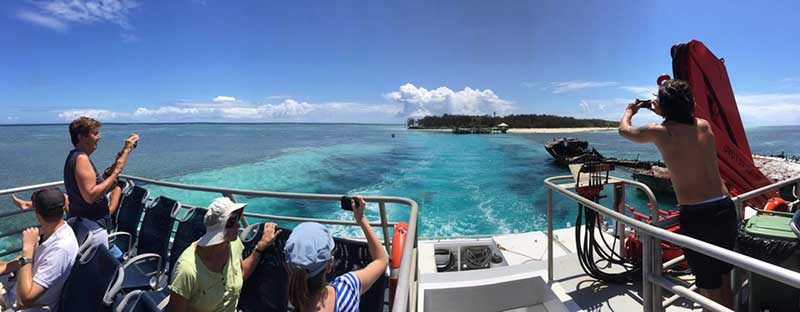
Heron Island Resort is on Heron Island, which is 72 km from mainland Australia.
It’s not actually an island, it’s a coral cay built from coral over hundreds of years.
It is surrounded by a shallow coral reef exposed at low tide which extends for 100 m to where it drops off into deep ocean.
A channel and jetty were created years ago to allow access by ferry from Gladstone (about two hours).
Or you can arrive in style by seaplane (honeymooners usually!)
Is Heron Island Resort in a national park?
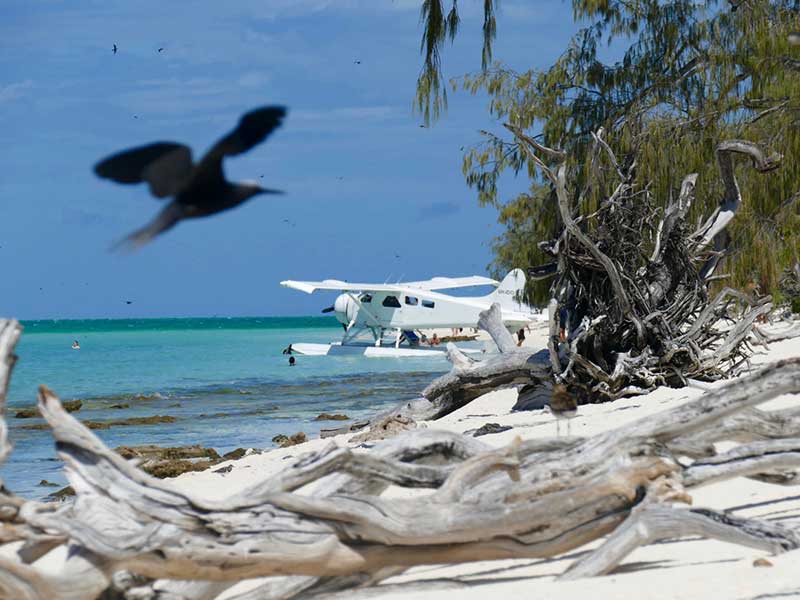
Heron Island is a National Park and a Marine Park, so everything on the island and in the water is protected.
This means as humans, we are very much secondary to life on the land or in the water.
We are merely voyeurs of nature, so sit back, indulge and enjoy the view.
When to go to Heron Island?
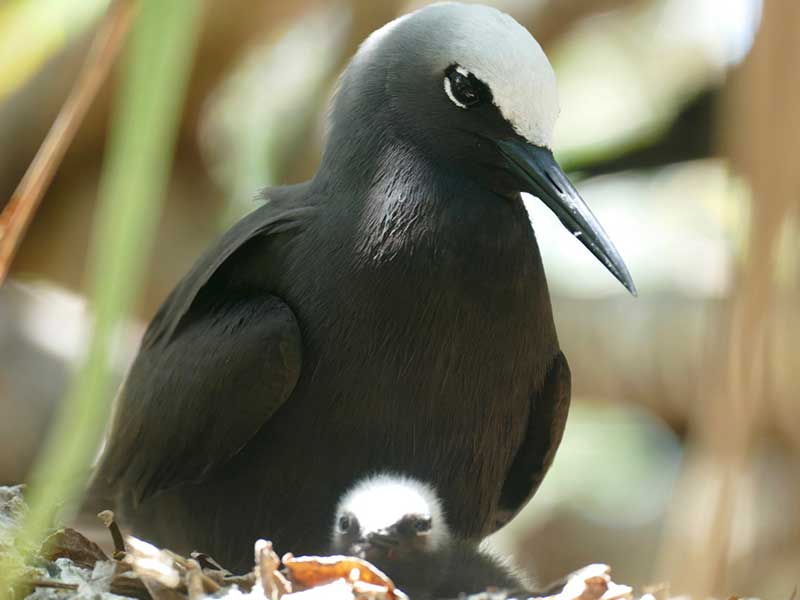
Every season is different on Heron Island.
In December we enjoyed thousands of White Capped Noddy Terns nesting and chicks hatching.
Remember Hitchcock’s “The Birds”?
Every tree and bush was full of little black and white noddies. Their chattering call could be heard through the night.
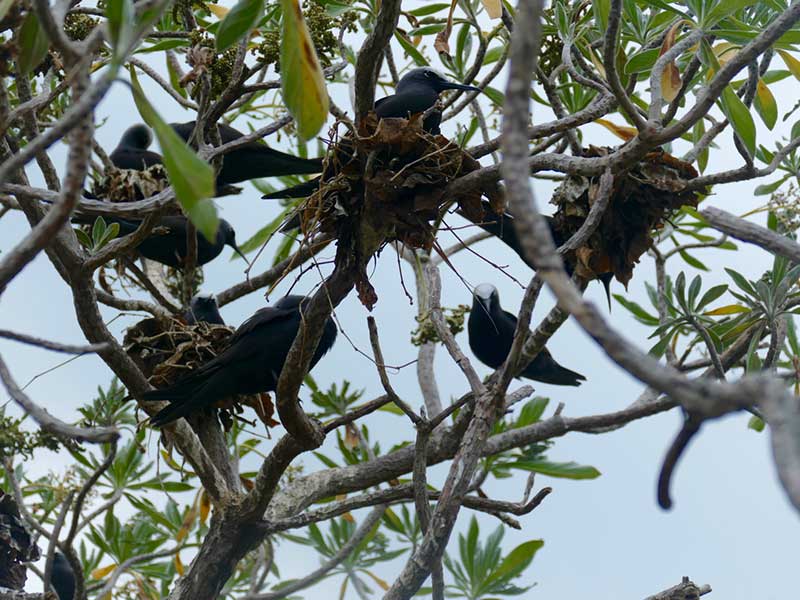
And watch out when they fly around during the day.
They will fly straight at you, disconcerting in the least and which requires a good awareness of your environment and well-honed ‘duck and weave’ skills.
Wedge-Tailed Shearwaters had just started to arrive and burrow, often right next to our room or under our deck.
Their distinctive call is very much like a human baby crying and can be very hard to distinguish.
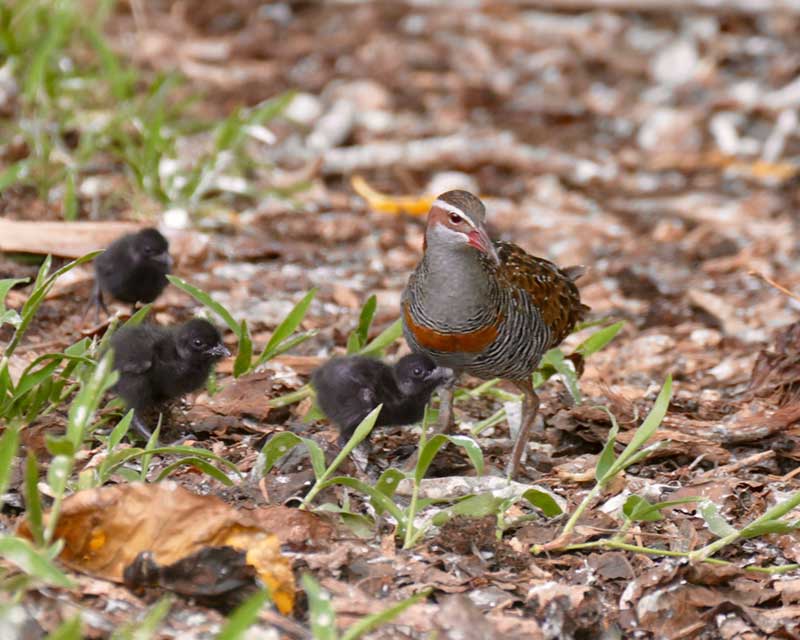
If you travel with a small baby you may end up constantly looking for your child until you realise the crying is just a nesting shearwater outside your room.
Also, be very careful if wandering off the main paths as the ground can collapse. You could be accidentally standing on a burrow up to two metres long.
A pair of White Crested Sea Eagles nest regularly on the island but we were not lucky enough to spot them on this visit.
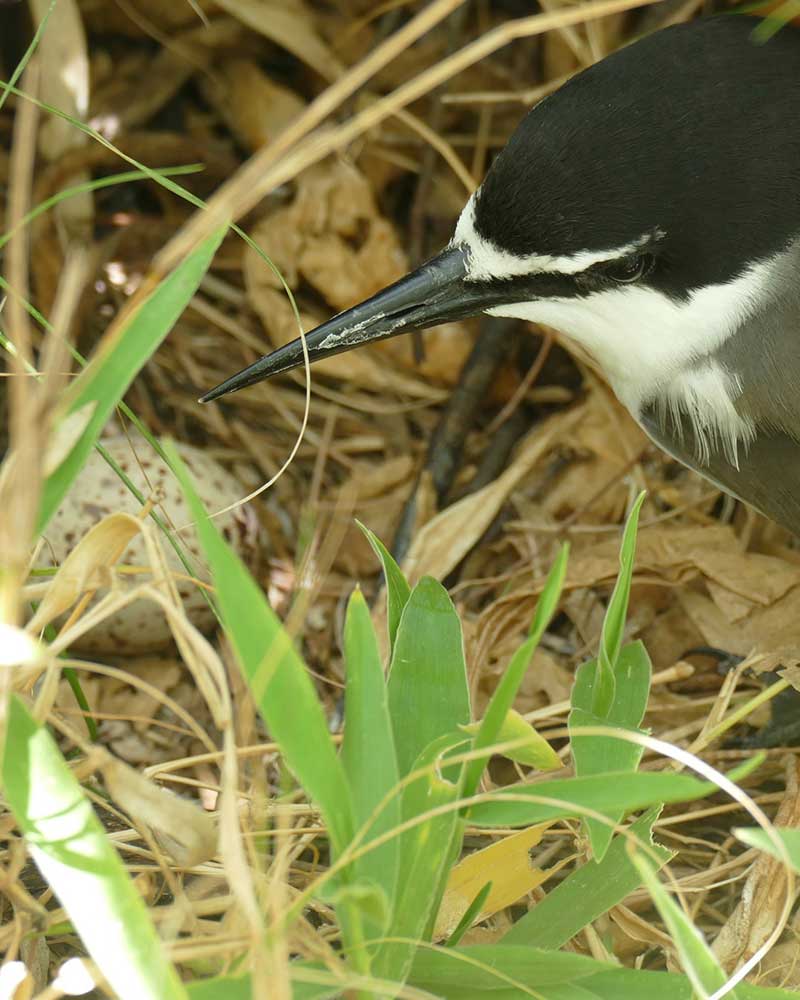
But we did find a group of Bridled Terns who all seemed to be defending one mum and her single nest egg, hidden under a bush right next to the helipad.
Thank god there were very few helicopter visits to the island, if only for the sake of that one egg to survive.
For more Queensland ecotourism experiences discover the whale watching capital of the world with this Hervey Bay whale watching guide and more things to do in Hervey Bay.
Heron Island marine life
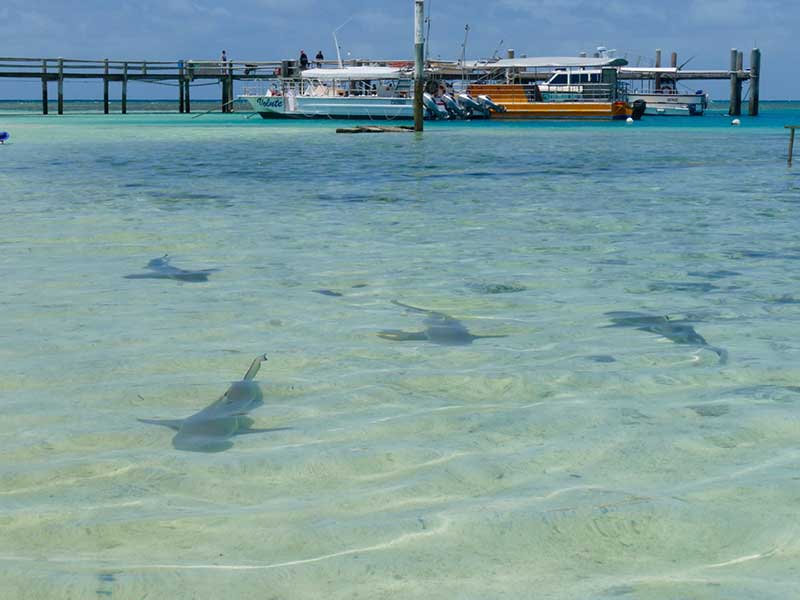
The water was full of marine life.
It was not uncommon to hear a child in the shallows crying “it’s chasing me!”, only to view a baby White or Blacktip Reef Shark cruising the ankle deep water, curious around the humans paddling in their territory.
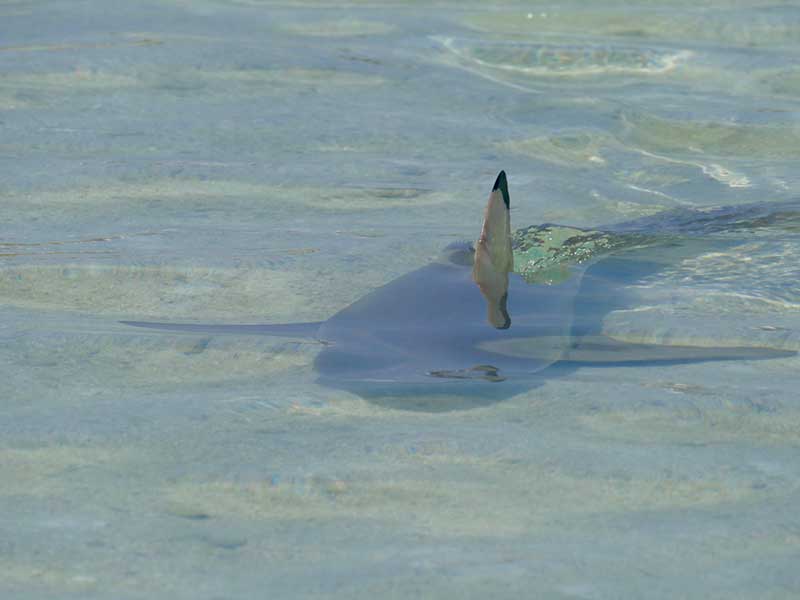
In fact, it was amazing to see.
At times, we counted a dozen or so metre-long sharks and rays in the shallow aqua and crystal clear water along the shoreline or near the jetty.
Snorkelling here is a dream.
The waters are shallow and being a no-take zone, fish are plentiful and grow to large sizes.
There are colourful clams are everywhere.
Rays are in large numbers, including the Spotted Eagle Ray and Cowtail String Ray.
But I adored the Giant Shovel-Nosed Rays, which I have rarely seen anywhere else.
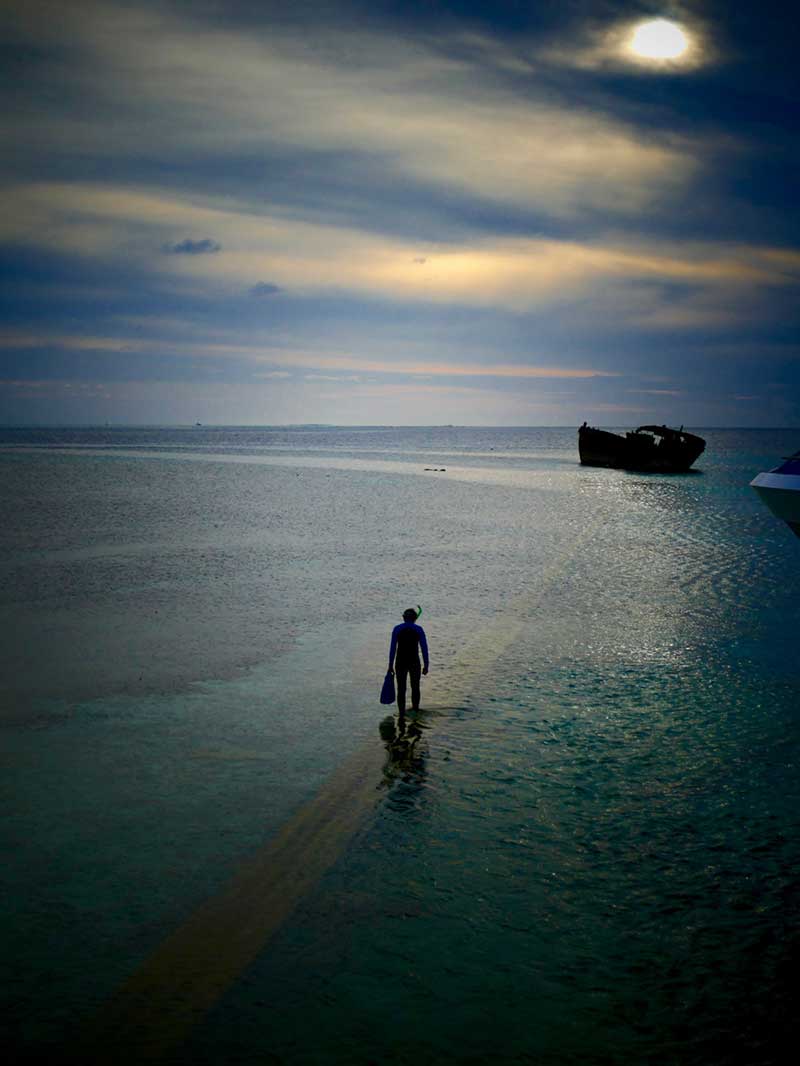
I love the fact they rest on the sandy sea floor trying to camouflage themselves under the sand, only to have their three Christmas tree-like dorsal fins sticking up like beacons!
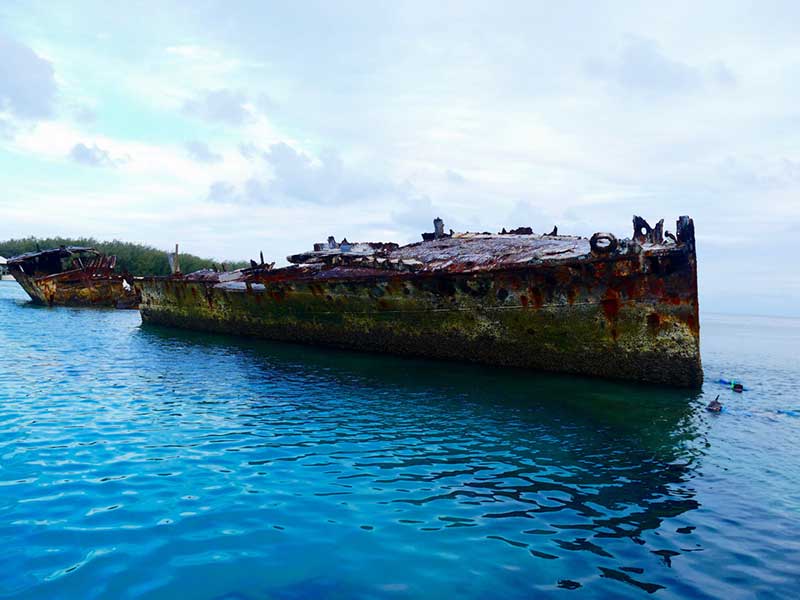
There were too many Black and Whitetip Reef Sharks to count.
We even saw a few large Lemon Sharks in the shallows, again a personal first.
Love islands? Here are more islands in Queensland including things to do on Magnetic Island.
Turtles at Heron Island Resort
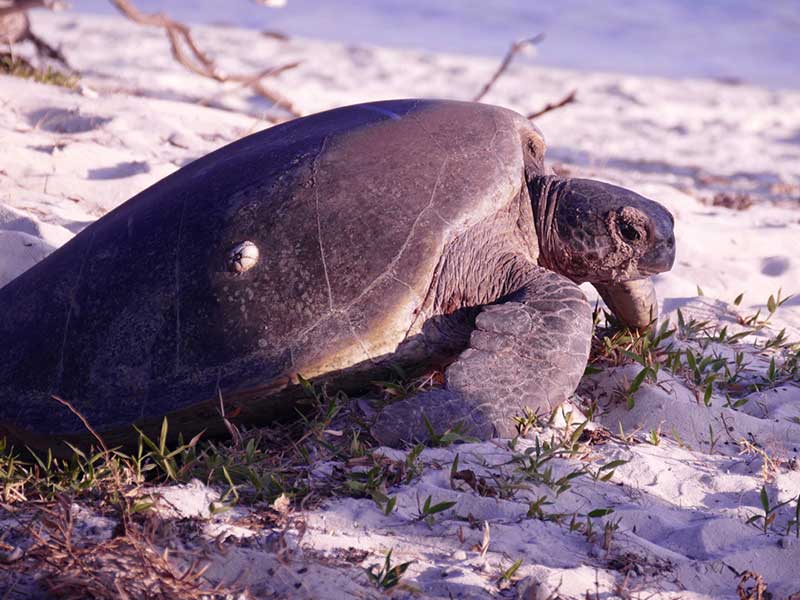
In the 1920s, Heron Island housed a turtle canning factory and in the 1950s turtle riding was a popular event with Heron Island Resort visitors.
These days, “leave only footprints” is a slogan that comes to mind when you visit this nature resort.
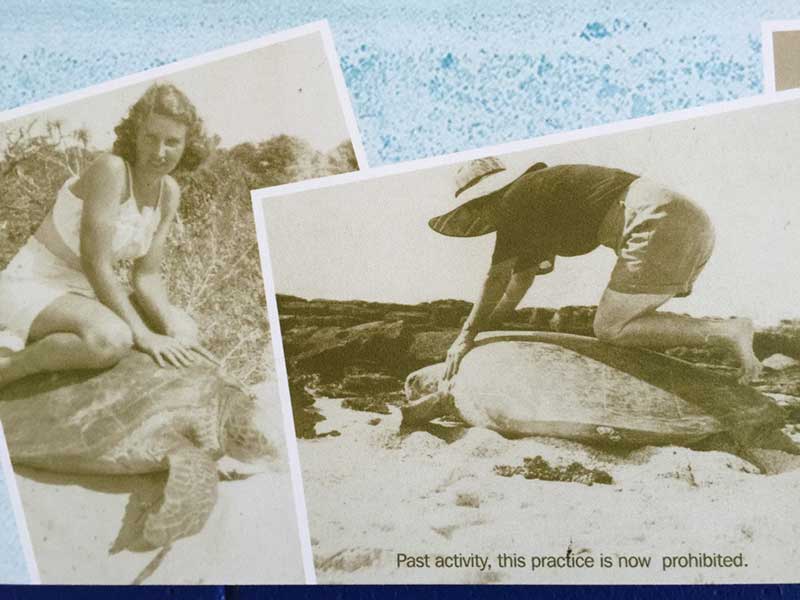
The resort staff were tasked to go out at night and roll turtles onto their backs so they would be available for guests during the day to ride and have photos taken.
Thank God we have evolved since those times.
Now a Capricornia Bay National Park and Marine Park, wildlife is fully protected on Heron Island.
Turtle breeding seasons
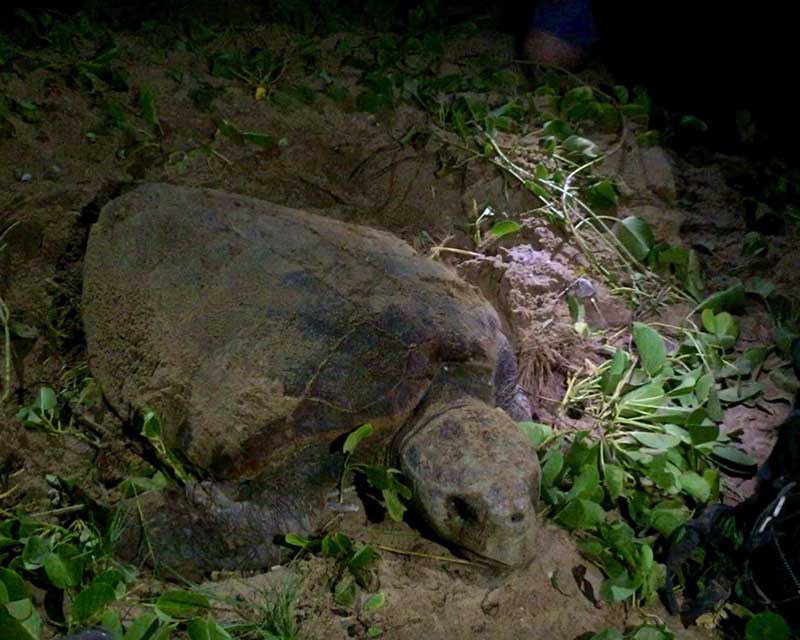
Each year, the turtles return to Lady Elliot Island between October and December to nest.
They can lay a clutch of up to 120 eggs at a time, and come back three to five times in a season, but only four to six years at a time.
The females return to the same beach they lay their eggs on, as do the hatchlings when they become mature breeding females.
As a guest of the resort, you can wander at night to view the turtles coming onto land to make their nest.
But there are strict rules to be followed so as not to disturb this natural phenomenon in action.
It can take two to five hours, depending on the conditions and the type and nature of the turtle.
Loggerheads are known to be much faster, whilst greens tend to wander around a bit and are more choosey where they decide to lay.
It is known that turtles are put off by lights and are very sensitive to movement.
Torches or any form of light are not allowed on the beach or nearby unless it is a weak yellow or red light.
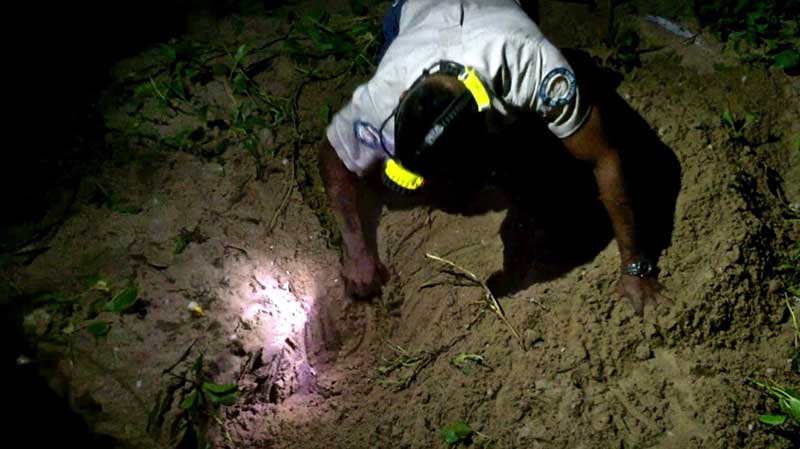
If you see a turtle ahead of you, simply stop until she has gone well past up into the dunes.
Once they have started laying about 15 to 20 eggs, a hormone kicks in for her to continue laying despite people close by watching and monitoring her progress.
All turtles are tagged for research purposes and their shell measured for size and maturity, usually by a team of volunteers.
Once the ping-pong shaped eggs are laid, there is a two-hour window for them to form an embryo.
If the eggs are laid below the high tide line, volunteers have that window to move the eggs to higher ground to ensure their survival.
Turtle hatching season
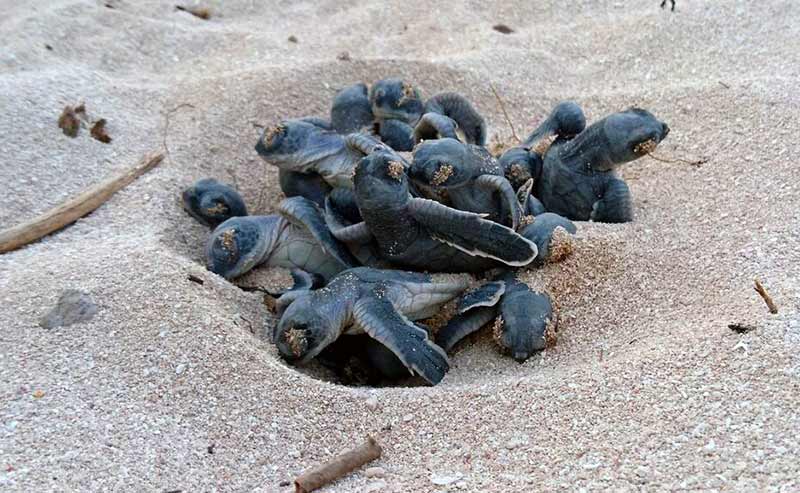
Turtle hatching season from January to May is the time to see baby Green and Loggerhead Turtles make their way to the reef.
Naturalist guides on Heron Island lead educational tours every evening when its best to view the turtles hatching.
The journey a baby turtle makes from its nest to the sea is an important milestone in the lifecycle of a turtle.
A baby turtle must be allowed to find its own way into the water without human intervention, as this first journey from sand to sea creates an imprint that will guide the turtle to find its way back to the place it was born, many years later.
After attending a formal turtle information talk about the rules of engagement, you are allowed to experience turtles coming onto the beaches at night and during high tides.
If you are still awake after all that fresh air and daytime activities and you have never seen it before, I would encourage you to do this just once during your stay.
Never use a white light torch at night.
A red, faint yellow or better still no torch at all, are best for fear of disturbing them from laying.
It takes around six to eight weeks for the eggs to hatch and up to three days for the hatchlings to dig themselves up through the deep sand to the surface.
Then the race is on to make it to the water before predators feast on the moving smorgasbord flipping its way to the sea.
Baby turtles are attracted to light and will follow it.
If it isn’t the light of the moon or stars on the water but a flashlight or room light, they will go towards it.
And they are even known to come out of the water to follow a light, so a no light policy is essential to their survival to get them to go to and stay in the water.
The best time to view turtles is two hours before or after high tide.
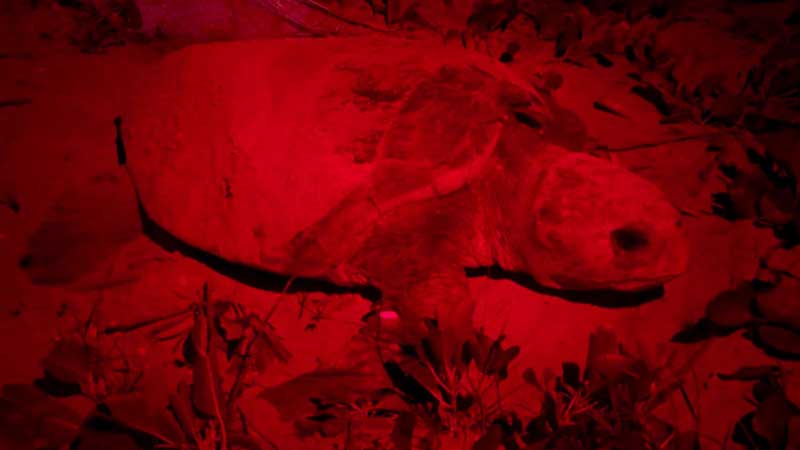
Leave only footprints (rules of engagement)
- No lights on the beach
- No flash photography
- Stand still if a turtle is nearby or you may cause a ‘turn around’
- Pass or view her only from behind
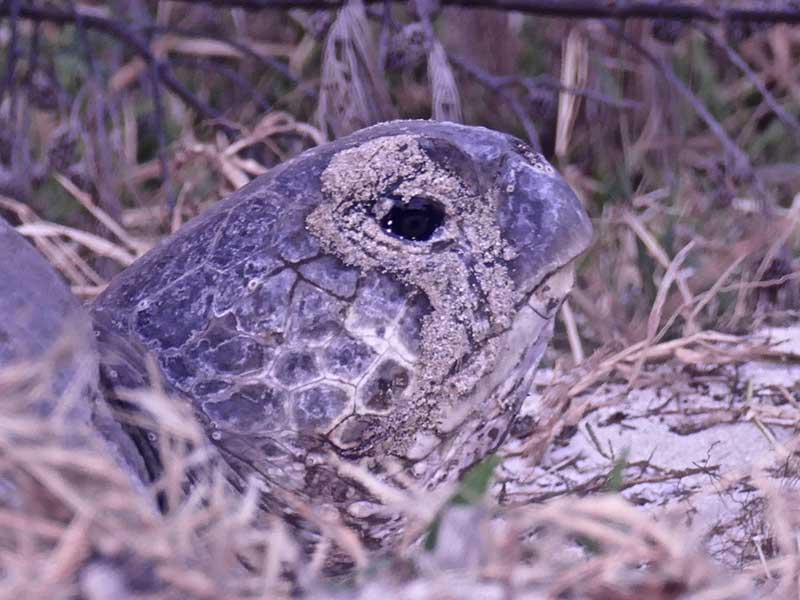
Stages of nesting
Body pitting: stay 10m behind her- no lights at all
Digging her egg chamber (50cm deep): stay 10m behind her – no lights at all
Laying her eggs: slowly approach from behind after 15 to 20 eggs are laid, and take photos without a flash (a low power torch is okay)
Covering her eggs: a low power torch is okay but only around her rear
Camouflaging her nest: stay 10m behind her – no lights at all
Returning to sea: stay 10m behind her – no lights at all
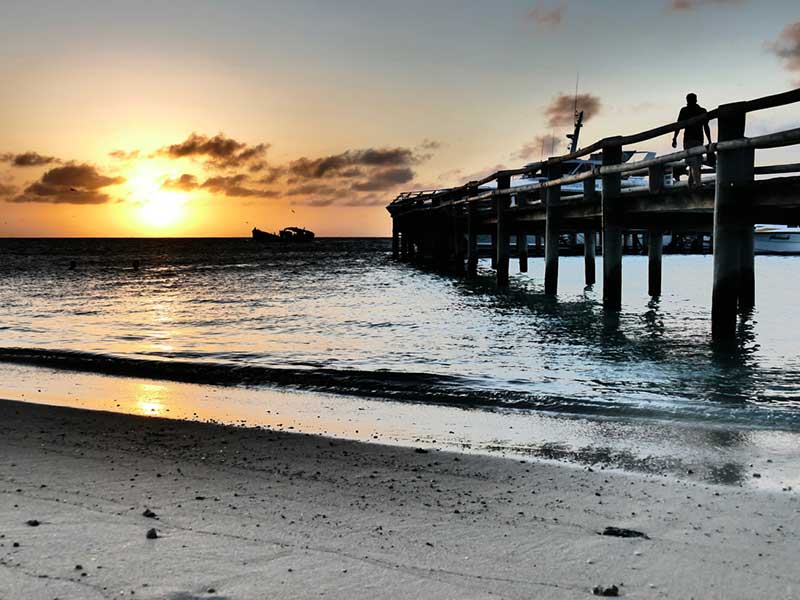
So enjoy but be Turtle Wise!
So, is Heron Island worth a visit? You bet it is!
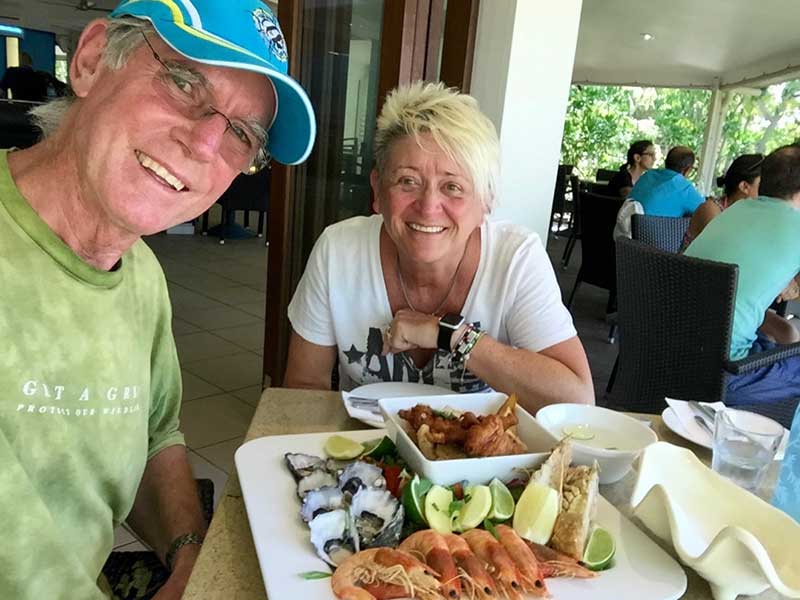
And I haven’t even mentioned the no phone, no television and no internet distraction. Or the great food and lovely, helpful and obliging young staff at Heron Island Resort.
Or the complimentary reef, island and bird walks. Or the tour of the largest Research Station in the Southern hemisphere. Or the most amazing sunsets?
Need I go on?
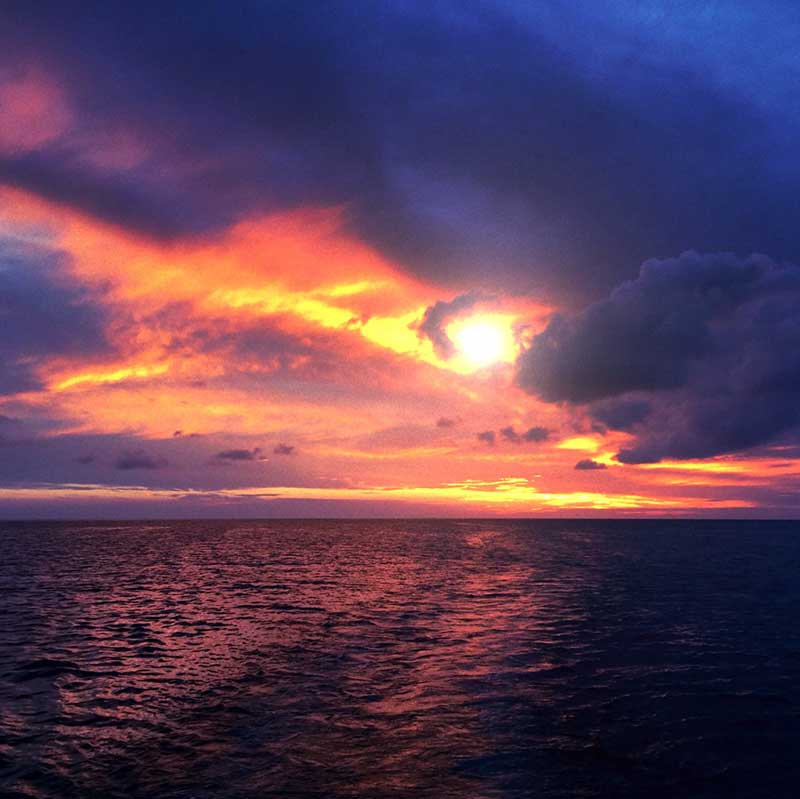
Irene Isaacson ducked, weaved and swam at her own safety and expense.
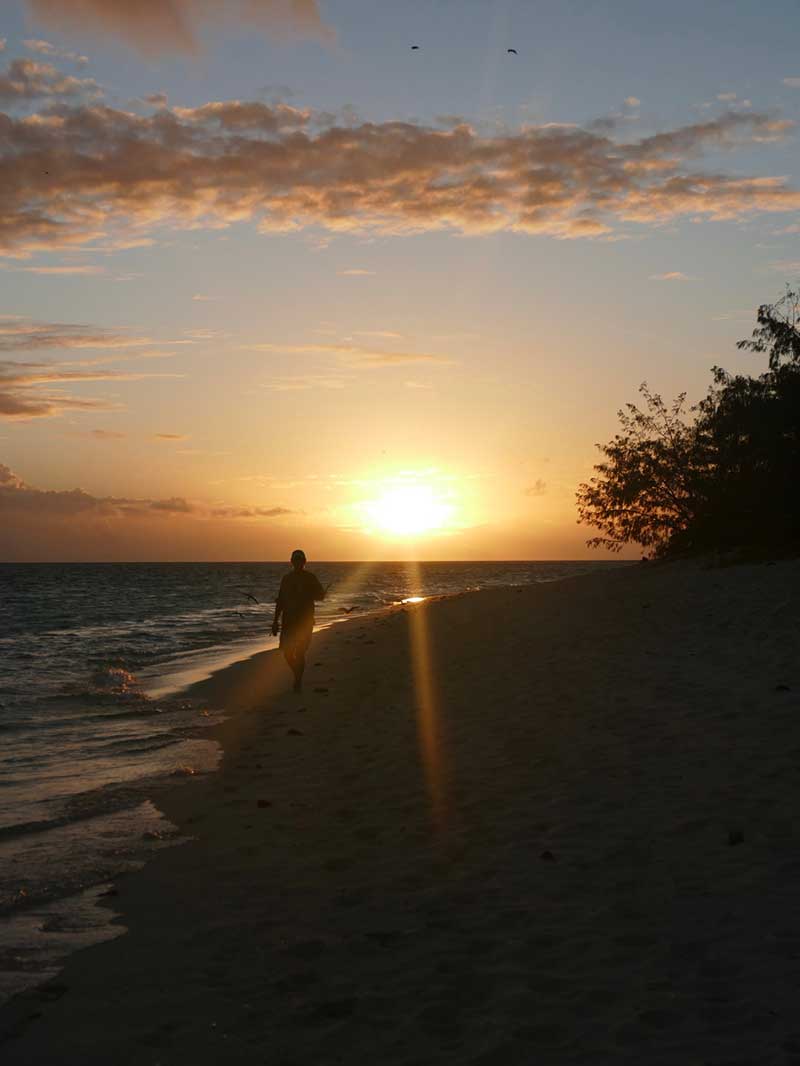
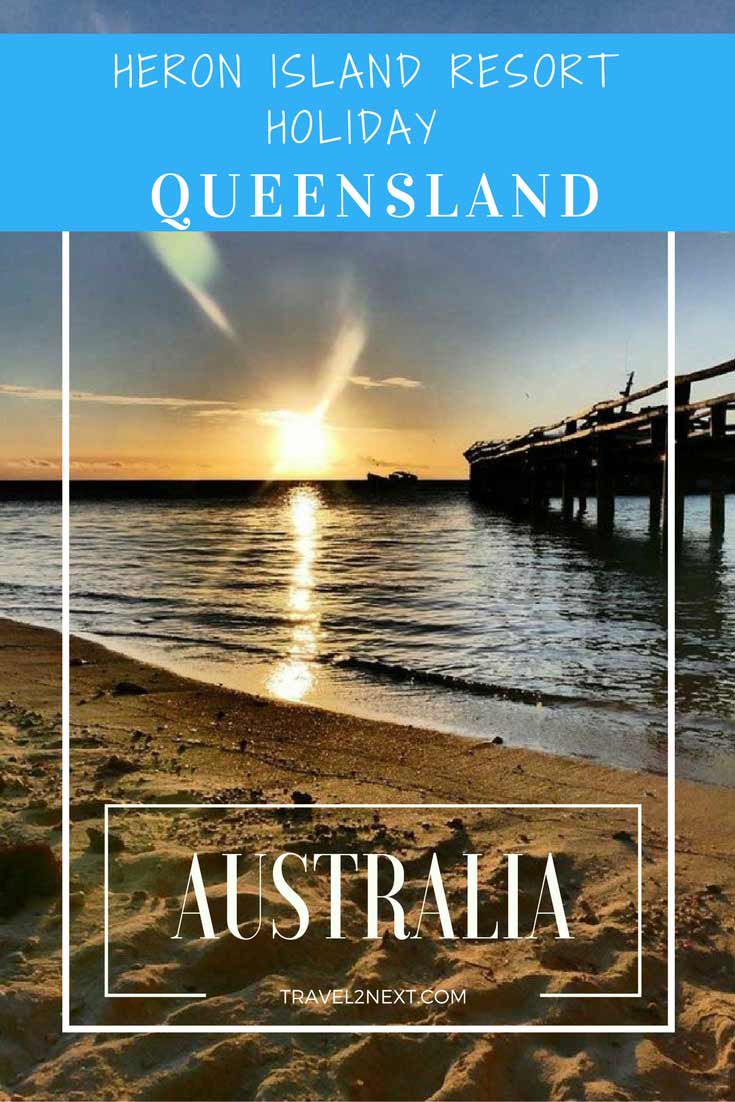
Plan Your Trip
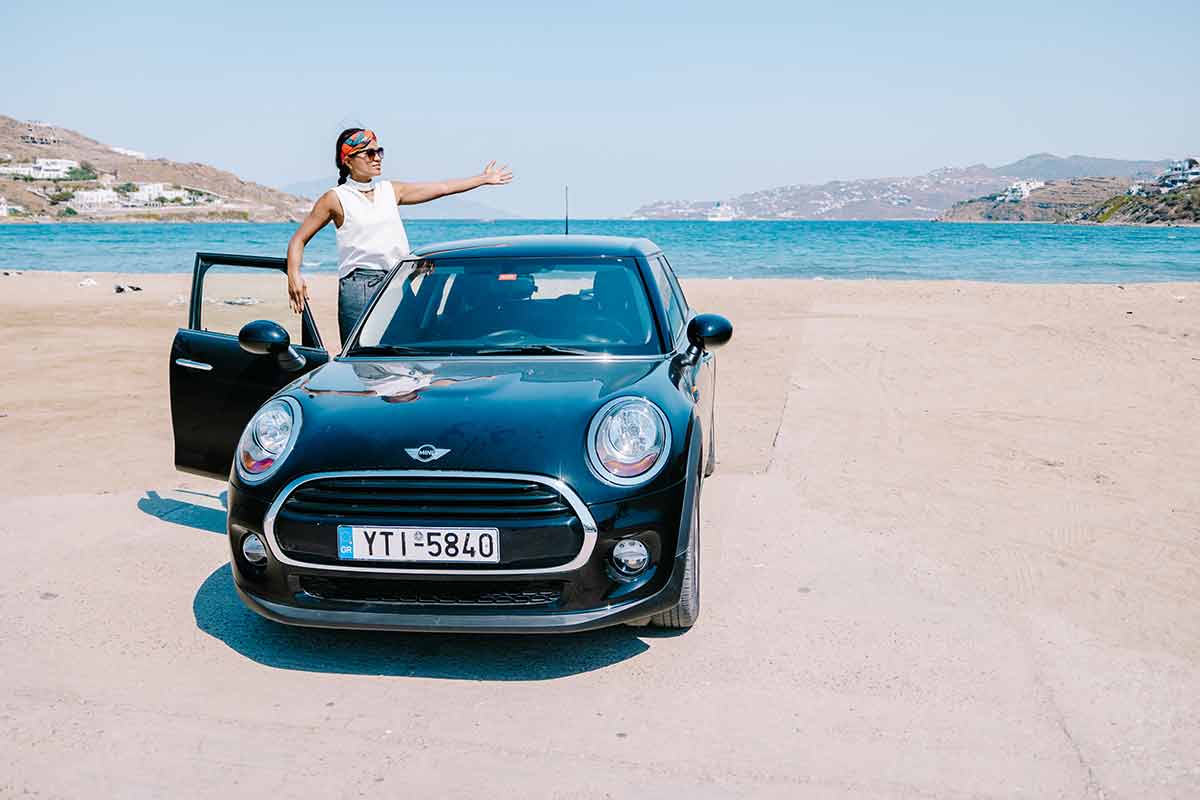
Rent A Car – Find the best car rental rates at Discover Cars. They compare car hire companies to provide you with the best deal right now.
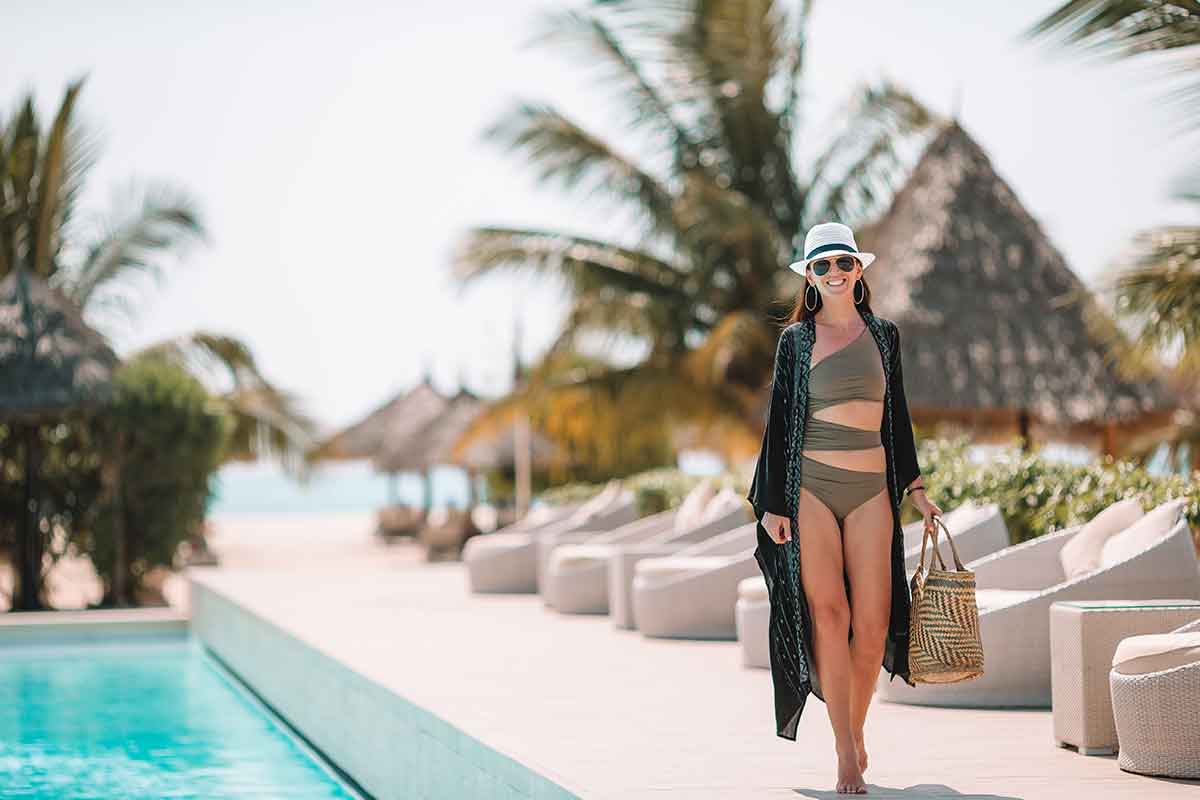
Find A Hotel – If you’re curious about this article and are looking for somewhere to stay, take a look at these amazing hotels.



